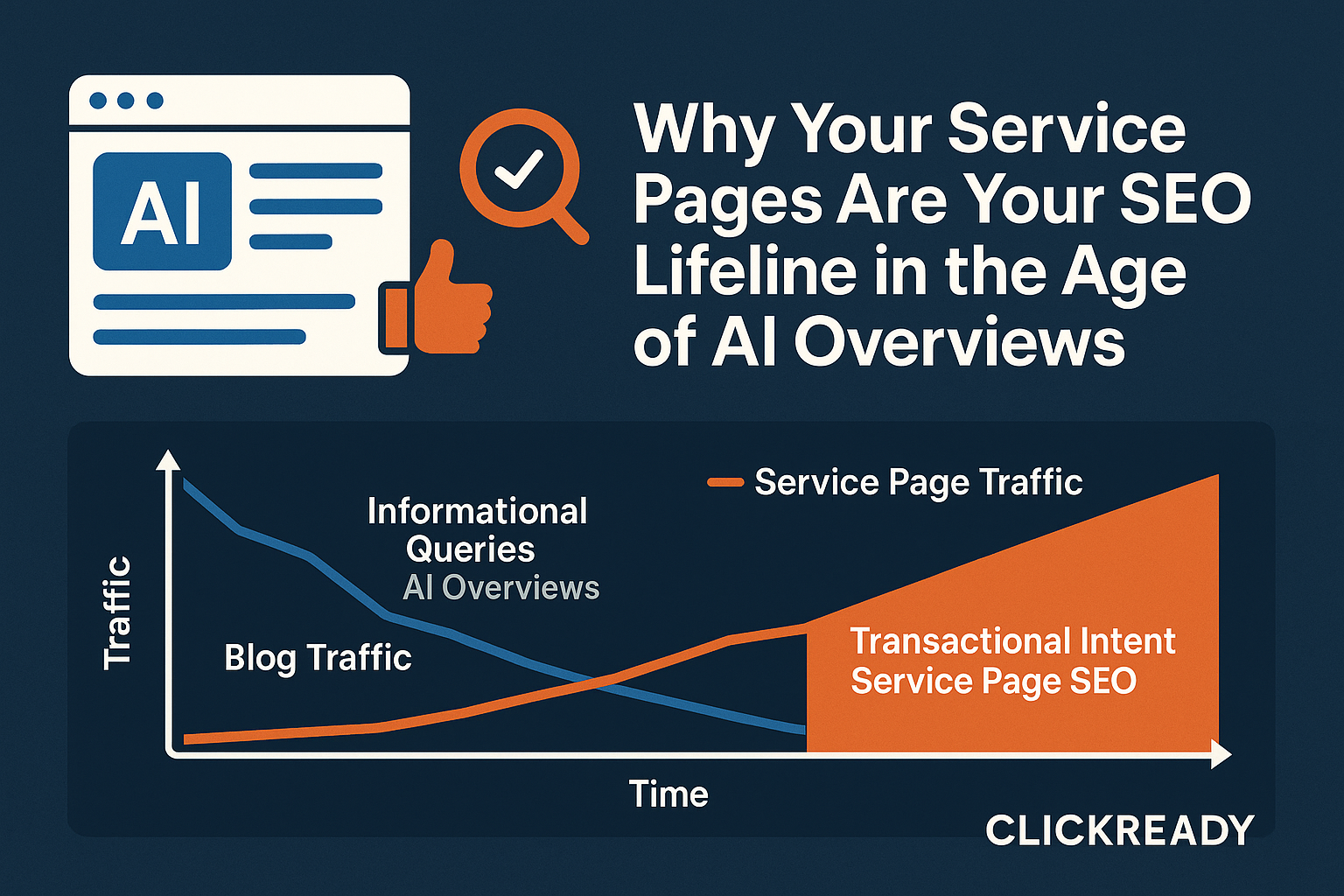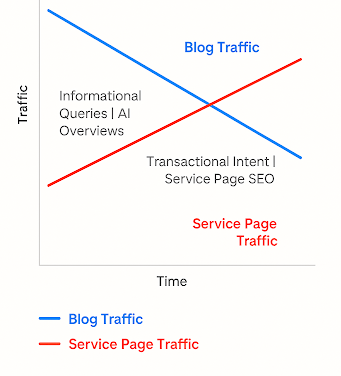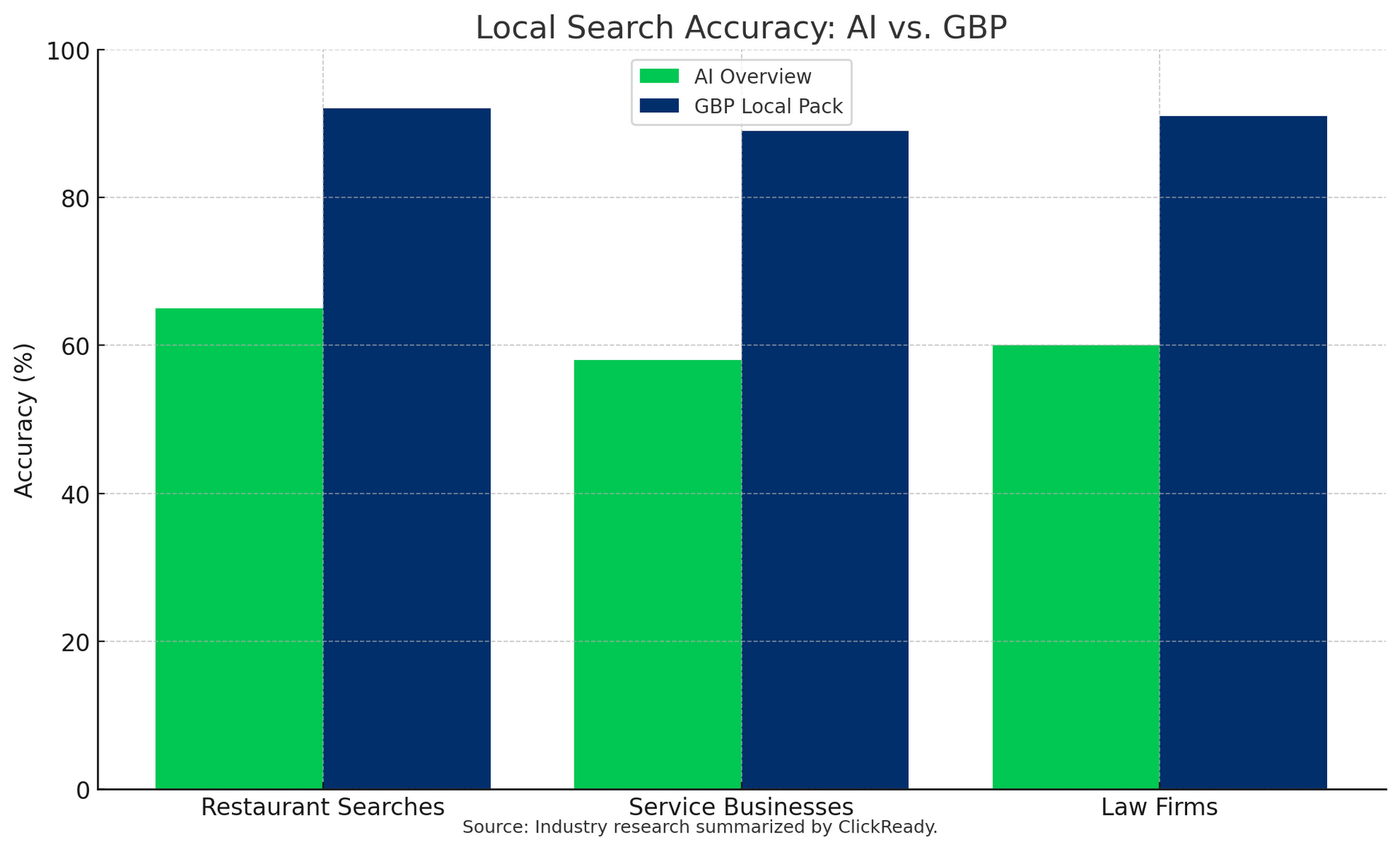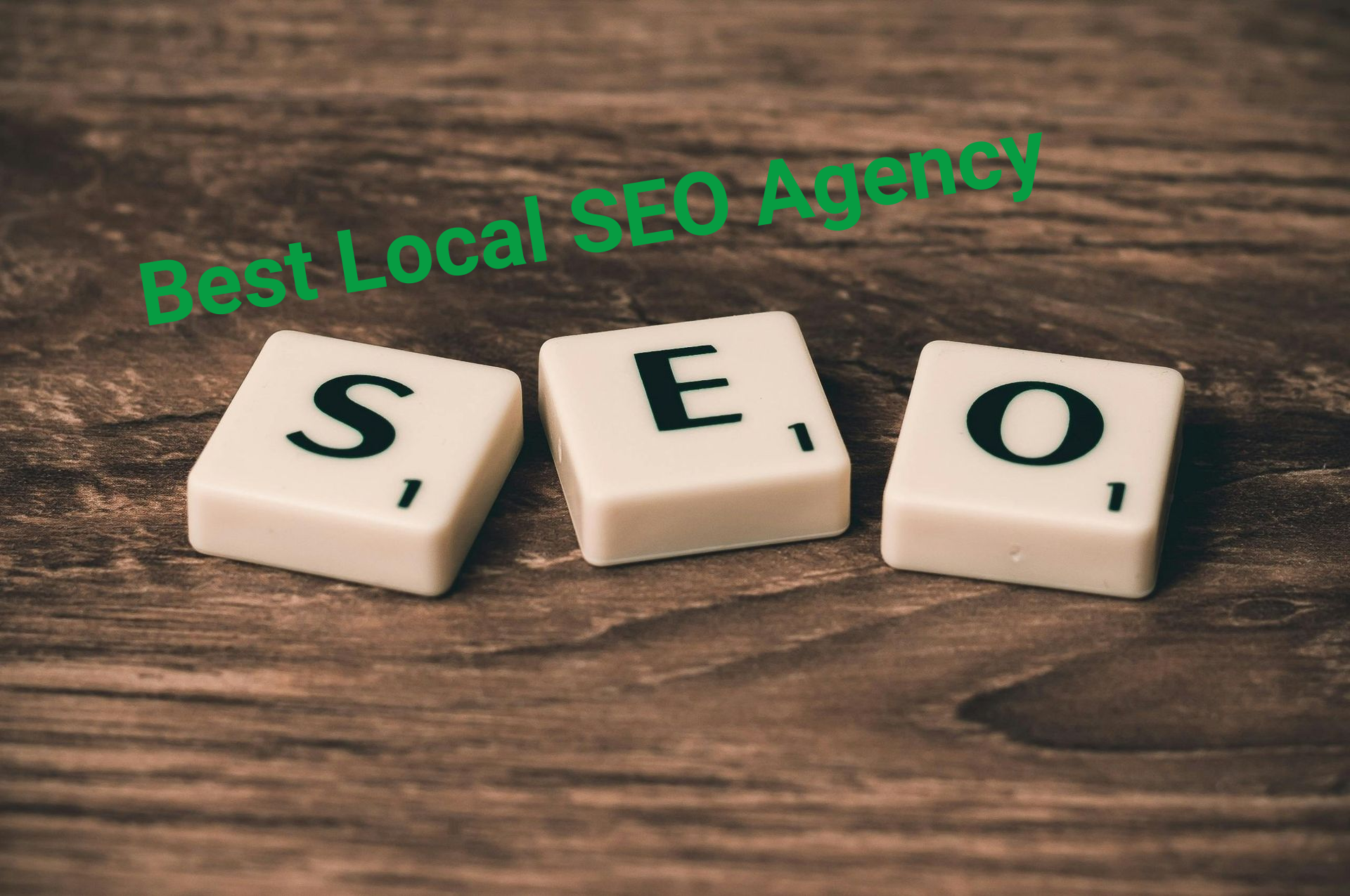Why Your Service Pages Are Your SEO Lifeline in the Age of AI Overviews

If you run a local business—a law firm, dental office, restaurant, or any service-based company—you already know that showing up online is everything. But lately, you might’ve noticed something’s changing. Website traffic feels unpredictable, and your blog posts, which used to pull in steady visitors, aren’t performing like they used to. So, what’s going on?
The answer lies in a shift happening right at the top of Google: AI Overviews.
These AI-generated summaries are changing the way people interact with search results, and if your current SEO strategy relies heavily on blog content, it’s time to take a closer look. The good news? Your service pages are holding down the fort, so let’s look at how we can keep them standing strong.
What Are AI Overviews—and Why Do They Matter?
AI Overviews are featured snippets generated by artificial intelligence, designed to answer user questions quickly and directly in search results—without requiring users to click on a website.
That’s great for online searchers’ convenience, but not so great for businesses that rely on blog traffic. When someone searches for “how to choose the right lawyer” or “what causes tooth sensitivity,” AI provides the answer in a summary box at the top of the search page. No click required. And no visit to your carefully crafted blog post.
According to recent studies, traditional organic listings can see a drop of nearly 20% in click-through rates when AI Overviews are present—especially for informational searches. That means fewer eyes on your blogs, even if they’re ranking well.
Why Service Pages Are (Still) Winning
Here’s where it gets interesting: Not all pages are equally affected.
Service pages—your core content that explains what you do, who you serve, and where you operate—are seeing less of a decline. In fact, many businesses are experiencing steady or even increased traffic to these high-intent pages.
Why? Because AI Overviews like to answer informational queries, not transactional ones. When someone searches “how to fix a leaky faucet,” they might get an AI summary. But when they search for “plumber near me” or “same-day emergency root canal [city name],” they’re looking to take action and they want a business they can trust.
That’s where your service pages come in. They give users the details AI can’t—pricing, process, guarantees, reviews, photos, and ways to book or contact you directly. These pages connect with buyers who are ready to convert.
📊 How Traffic Is Shifting

How to Optimize Service Pages for Today’s Search Landscape
To make the most of this shift, here are five ways to strengthen your service pages and stay ahead:
1. Create Clear, Focused Content
Each service deserves its own page. If you’re a dentist, separate “teeth whitening” from “dental implants.” If you’re a law firm, split “family law” from “estate planning.” Make each page an informative, helpful destination and trim the fluff.
Use straightforward, jargon-free language that speaks to your ideal client. Show how you solve their problems and what makes your business different.
2. Incorporate Local SEO
Use natural, location-based keywords throughout your content (and not just in your title tag). For example:
- “Emergency AC repair in [City]”
- “Catering services for events in [Neighborhood]”
Include your city name in headers, alt text, and meta descriptions. And keep your Google Business Profile updated and accurate.
3. Use Schema Markup
Structured data (schema) helps search engines understand what your page is about. Adding LocalBusiness or Service schema unlocks rich snippets in search results like your hours, reviews, pricing, or business category.
This makes your listing more clickable and credible in search.
4. Add Strong Calls to Action
Tell users exactly what to do next. Examples:
- “Schedule a Free Consultation”
- “Call Now for Immediate Service”
- “Book Your Table Online”
Use CTAs consistently throughout the page and not just at the bottom. Who has that attention span these days?
5. Prioritize Mobile Speed and UX
Most local searches happen on phones. Your site must load quickly, display correctly, and be easy to navigate on mobile. Otherwise, users will bounce and probably go to your competitor.
Test your mobile experience regularly. Tools like Google Page Speed Insights help you identify and fix issues.
So… Are Blogs Dead?
Not at all. But their role is shifting.
Instead of trying to rank for broad questions like “how to hire a lawyer,” your blog should focus on niche, long-tail, or localized content that AI Overviews aren’t covering well.
Use your blog to:
- Build topical authority and trust
- Create content that supports your service pages through internal linking
- Target very specific questions your clients ask
- Share customer stories, behind-the-scenes insights, or how-tos that reflect your brand’s voice
Think of blogs now as supporting assets—not your primary traffic engine.

Final Thoughts: Don’t Just Adapt—Lead
Search is evolving, but so can you.
AI Overviews might siphon off casual browsers, but buyers with intent still want a clear, helpful, and human website experience. If you focus on building exceptional service pages with foundational local SEO and strong CTAs, you’ll continue to win clicks, leads, and loyal customers.
At ClickReady, we help small businesses like yours stay ahead of SEO shifts and make the most of every opportunity. Through optimizing your service pages or rethinking your content strategy, we’ve got your back.
Need help adapting your site to the AI era?
Let’s talk.
FAQ’s
What's the best approach to having my service pages truly stand out against AI Overviews?
The absolute best approach involves a multi-faceted focus: make sure your service pages are incredibly detailed, easy to navigate, include strong calls-to-action, and are hyper-optimized for local keywords. Better yet, back them up with a well maintained Google Business Profile that directly links to these pages, as highly-intent searchers still rely on the Local Pack and Maps and still need your GBP.
How can I tell if AI Overviews are negatively impacting my blog traffic specifically?
You can monitor this by comparing your blog post's organic click-through rates (CTR) in Google Search Console, especially for informational queries and their ranking positions. If your blog posts are ranking well but seeing a disproportionate drop in clicks since AI Overviews became more prominent, it's a strong indicator. Also, track conversions directly from service pages versus informational blog posts to see where real business action is happening.




